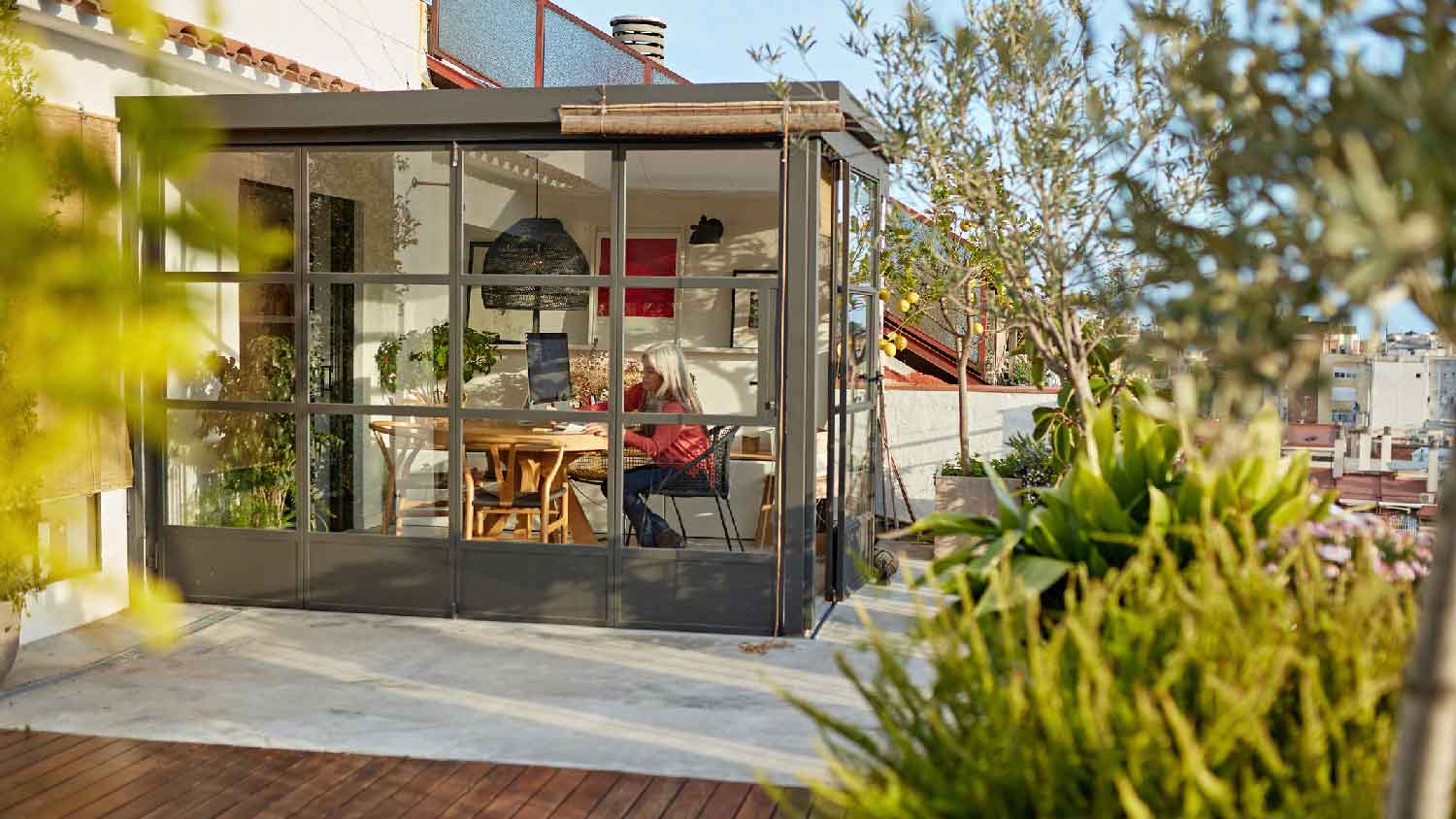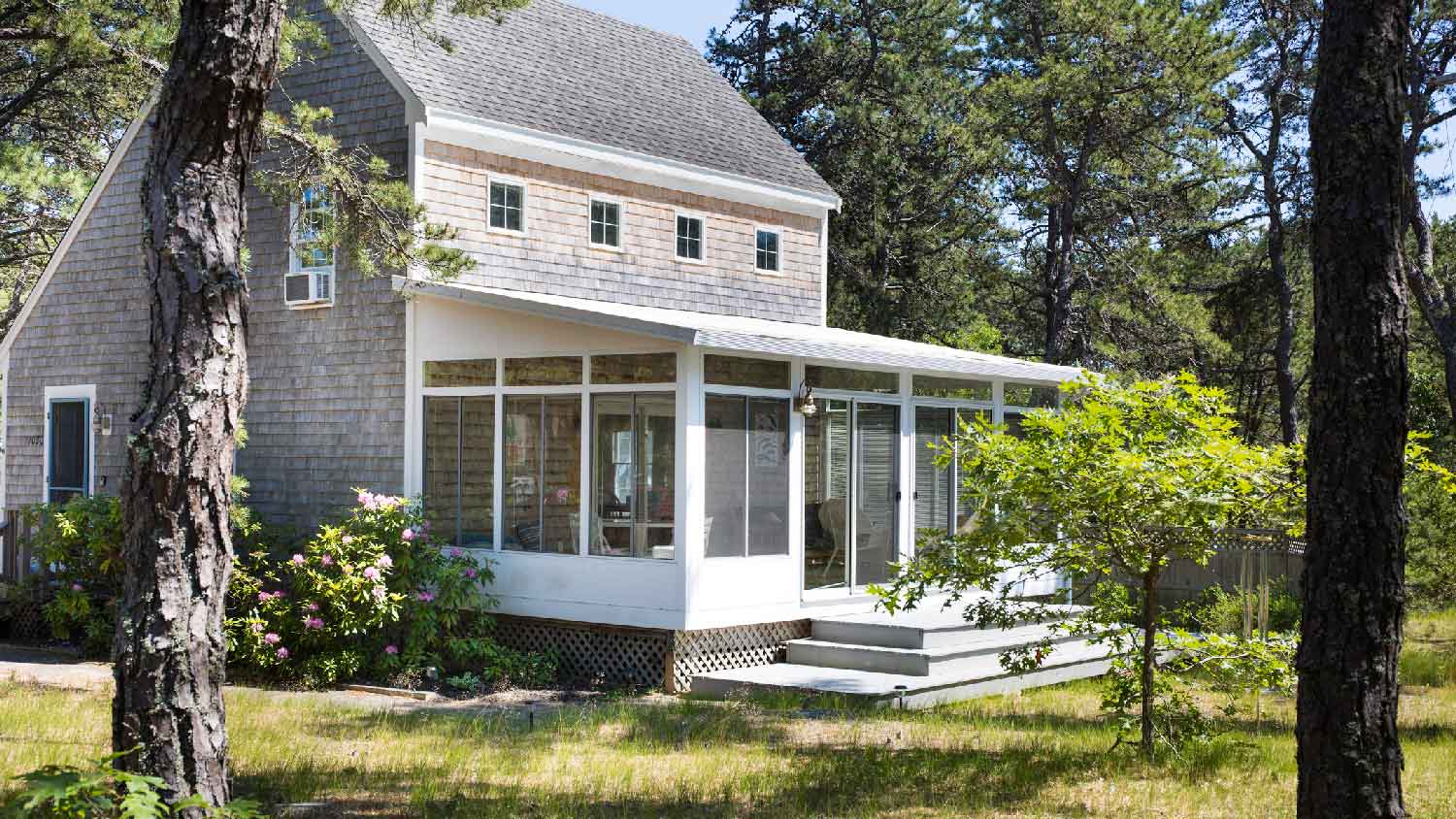3-Season vs. 4-Season Sunrooms: Pros, Cons, and Costs
Indoor-outdoor living that suits your needs


Four-season sunrooms feature HVAC systems for temperature control.
A 3-season sunroom costs between $10,000 and $40,000.
A 4-season sunroom averages between $25,000 and $80,000.
Adding a sunroom to your home can bring more relaxation to your life—and value to your home. When deciding whether to add a sunroom, you may be torn between a 3-season or a 4-season sunroom. Learn the differences between these two popular choices, including their costs, benefits, and drawbacks.
3-Season vs. 4-Season Sunrooms: What's the Difference?
In moderate or cold climates, 3-season sunrooms are designed for use in spring, summer, and fall. They don’t have insulation and often feature single-pane windows that provide limited temperature control.
Four-season sunrooms are constructed for year-round use and are equipped with better insulation, double- or triple-pane windows, and have their own heating and cooling systems.
What Is a 3-Season Sunroom?

A 3-season sunroom is an enclosed room used in spring, summer, and fall. It features large windows to let in natural light. Many also include screened panels in addition to windows that let you enjoy the fresh air on pleasant days.
A 3-season sunroom has minimal insulation and single-pane windows, making it unsuitable for extreme winter temperatures. It's attached to the house and relies on the home's heating and cooling systems, but it isn't effective in maintaining comfort during colder months. Three-season sunrooms are popular for their affordability and extended outdoor living experience.
| Pros | Cons |
|---|---|
| Affordable to build | Not suitable for winter months |
| Quick installation | Temperature control challenges |
| Increases home value | Less energy-efficient |
| Extends outdoor living space | Less durable than 4-season |
Best for:
Moderate climates where extreme winter weather is rare.
Budget-conscious homeowners who want a sunny spot to relax.
Homeowners looking to enjoy natural light, views, and fresh air while being protected from the elements.
Pros of 3-Season Sunrooms
Affordability is a notable perk of 3-season sunrooms because they're less expensive to build and maintain than 4-season sunrooms. Their construction is also simpler than fully insulated sunrooms, making them an attractive option for homeowners desiring to learn how to build a sunroom on a budget and on a deadline. Adding a 3-season sunroom can increase a home's value by adding relaxation space and enhancing the overall property appeal.
The design of a 3-season sunroom, featuring large windows and screens, allows for ample natural light and ventilation, creating a bright and airy environment. This extended outdoor living space provides a comfortable area to enjoy the outdoors without exposure to insects and harsh weather.
Cons of 3-Season Sunrooms
The primary concern about 3-season sunrooms is their limited use. Minimal insulation and single-pane windows make them unsuitable for winter months, restricting their functionality to milder seasons. Temperature control can be a problem, as these sunrooms rely on the home’s existing HVAC system, which may not provide adequate heating or cooling to the space.
Three-season sunrooms are less energy-efficient due to their lower insulation, resulting in potential heat loss in cooler weather and heat gain in warmer weather. The durability of 3-season sunrooms is a concern, as they may not withstand extreme weather conditions the way 4-season sunrooms can, potentially leading to maintenance issues and reduced longevity.
What Is a 4-Season Sunroom?
A 4-season sunroom is a well-insulated, climate-controlled home extension designed for year-round use. Equipped with double- or triple-pane windows, enhanced insulation, and its own heating and cooling systems, it maintains a comfortable temperature in all seasons.
It is ideal for relaxation, dining, or even as a home office. The robust construction and all-season functionality come at a higher cost but also boost the home's value and livability.
| Pros | Cons |
|---|---|
| Year-round use | High construction cost |
| Temperature control | Complex installation |
| Increases home value | Maintenance |
| Versatile space | Potential for overheating |
Best for:
Homeowners seeking a year-round indoor-outdoor living space
Creating an extra room that can serve various purposes.
Homeowners who have a bigger budget.
Pros of 4-Season Sunrooms

The greatest advantage of building a 4-season sunroom is its year-round use. These sunrooms provide a comfortable living space regardless of the weather, allowing for continuous enjoyment.
Equipped with their own heating and cooling systems, these sunrooms ensure consistent temperature control to maintain comfort in extreme heat and cold. Their superior insulation and double- or triple-pane windows significantly enhance energy efficiency to reduce heating and cooling costs.
Four-season sunrooms can substantially increase home value by adding an attractive and versatile living area. This versatile space can serve multiple purposes, such as a home office, dining area, or sitting room, making it a practical addition to any home. Choosing a sunroom versus room addition may be more cost-effective while offering that extra space.
Cons of 4-Season Sunrooms
The cost of building and maintaining 4-season sunrooms is expensive compared to 3-season sunrooms. The advanced materials and systems required to build them factor into the high cost.
The installation process is complex, requires additional time and expertise, and often involves more intricate building permits and regulations. This complexity can significantly extend the construction timeline. Four-season sunrooms also require more maintenance to ensure the HVAC systems and insulation are in good shape.
3-Season vs. 4-Season Sunrooms
Appearance: 4-Season Sunrooms
Four-season sunrooms are often considered more beautiful than 3-season sunrooms. They’re built with higher-quality materials, including double- or triple-pane windows, so they have a more polished and refined look. Their design often integrates better with the home's main structure, offering a seamless transition between indoor and outdoor spaces. The ability to customize with features such as skylights, advanced lighting, and high-end finishes further enhances their aesthetic appeal.
Options and Customization: 4-Season Sunrooms
Due to their year-round functionality, four-season sunrooms can be outfitted with advanced features such as high-efficiency HVAC systems, double- or triple-pane windows, and superior insulation materials. They also allow for extensive customization in terms of design, including skylights, integrated lighting, flooring options, and high-end finishes that can match the look of the main house.
Durability: 4-Season Sunrooms
Built with higher-quality materials, 4-season sunrooms are designed to withstand harsh weather conditions and provide reliable performance year-round. Their construction ensures they can handle temperature fluctuations, heavy snow, and strong winds to maintain long-term integrity over time.
Price: 3-Season Sunrooms
A 3-season sunroom costs between $10,000 and $40,000, while a 4-season sunroom averages between $25,000 and $80,000. Three-season sunrooms require less expensive materials, such as single-pane windows and minimal insulation, and don't need the advanced HVAC systems required for year-round use. The simpler construction process also reduces labor costs and the need for complex building permits and regulations, making three-season sunrooms a more affordable option.
Ease of Installation: 3-Season Sunrooms
Three-season sunrooms feature a simpler design than 4-season sunrooms. They require fewer materials and less labor-intensive construction techniques. This straightforward installation process of 3-season sunrooms means your local sunroom contractor will need to obtain fewer building permits and regulations, reducing the complexity and time needed to complete the project.
Ease of Repair: 3-Season Sunrooms
The simpler construction and basic materials of 3-season sunrooms make it easier to identify and address issues without needing specialized skills or equipment. Repairs are less costly and time-consuming since they don't involve the complex systems found in 4-season sunrooms. The straightforward design of 3-season sunrooms means that replacement parts are often more readily available and affordable.
Resale Value: 4-Season Sunrooms
Year-round usability, superior construction materials, and integration with the home's HVAC system make 4-season sunrooms highly attractive to potential buyers. The enhanced durability, energy efficiency, and aesthetic appeal contribute to the property's value. The versatility in function adds significant appeal, and while three-season sunrooms provide value as an additional space, they lack the same level of usefulness and luxury.





- Prefab Sunrooms: See the Light With This Informative Guide
- 9 Bright Ideas on How to Build a Sunroom on a Budget
- What Is a Sunroom, and Should You Add One to Your Home?
- 7 Flooring Ideas For Every Style of Sunroom
- What to Know About Adding a Sunroom to Your Home
- Who Builds Sunrooms? Here’s Who to Call to Brighten Your Space
- Solarium vs. Sunroom: Pros, Cons, and Costs
- What Is a Four Seasons Room? The Best Way To Live Your Indoor/Outdoor Dreams
- Sunroom vs. Screened Porch: Pros, Cons, and Costs
- Cool-Season vs. Warm-Season Grass: Which Is the Best Fit for Your Lawn?










